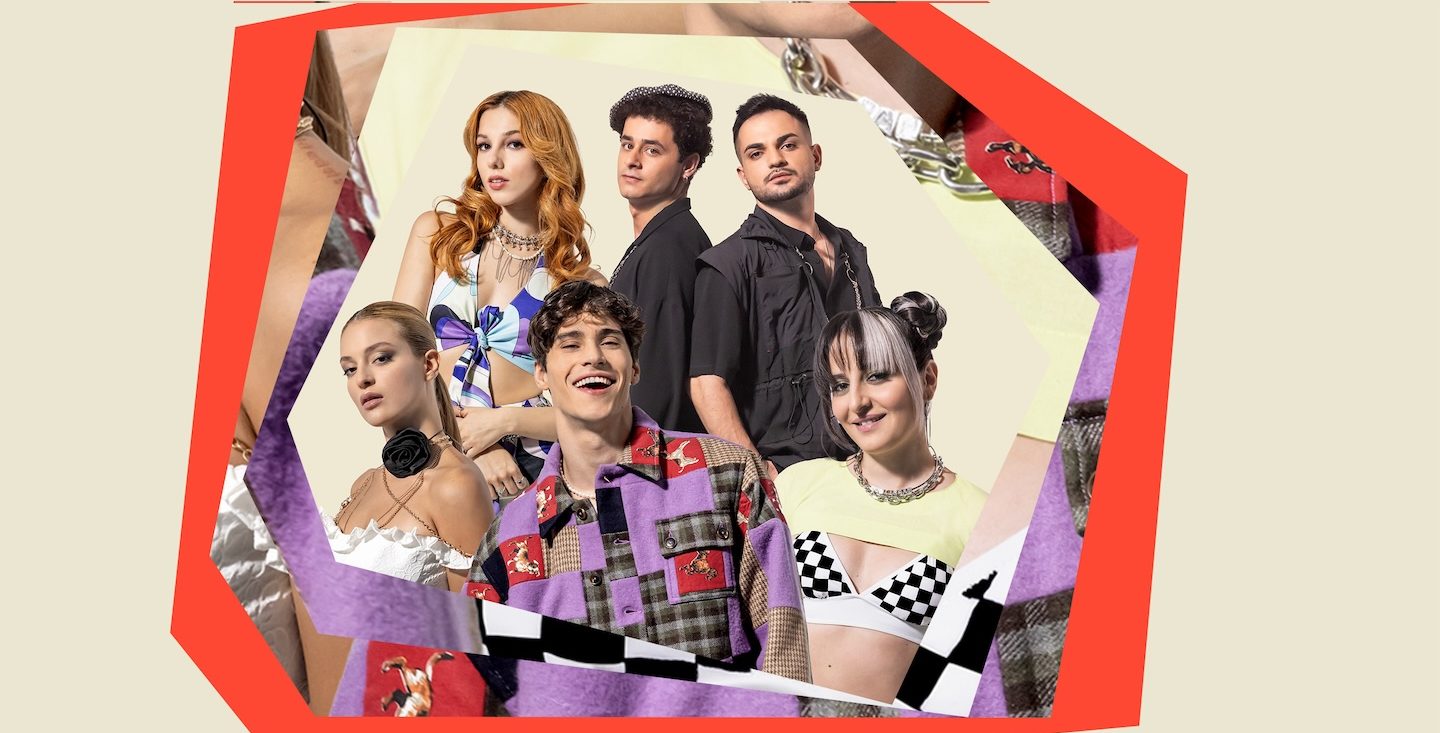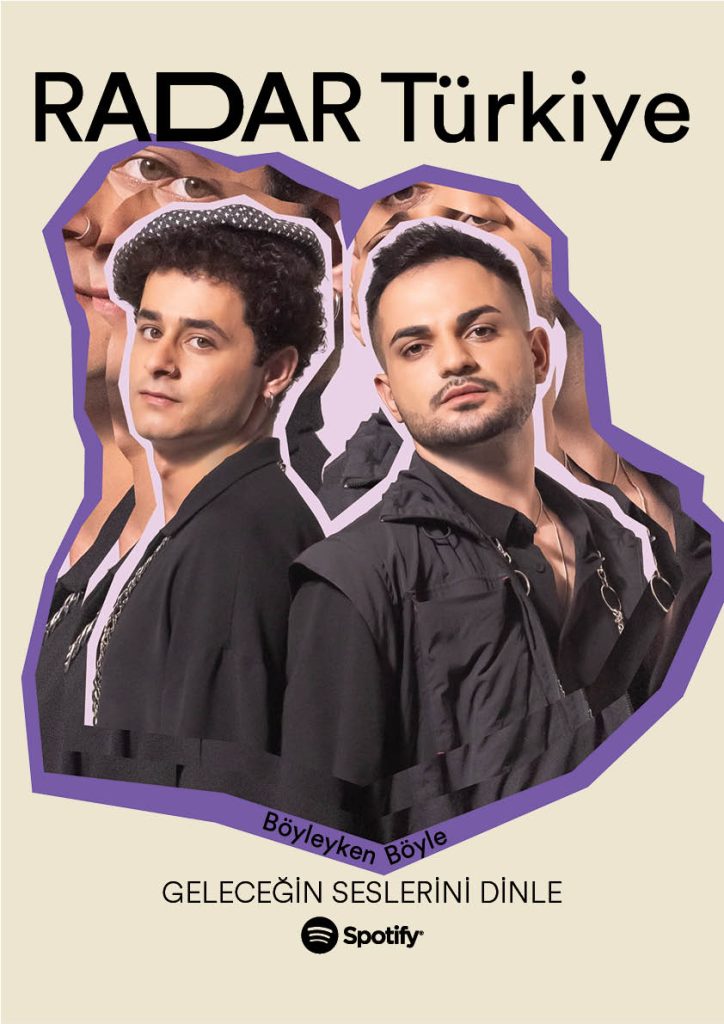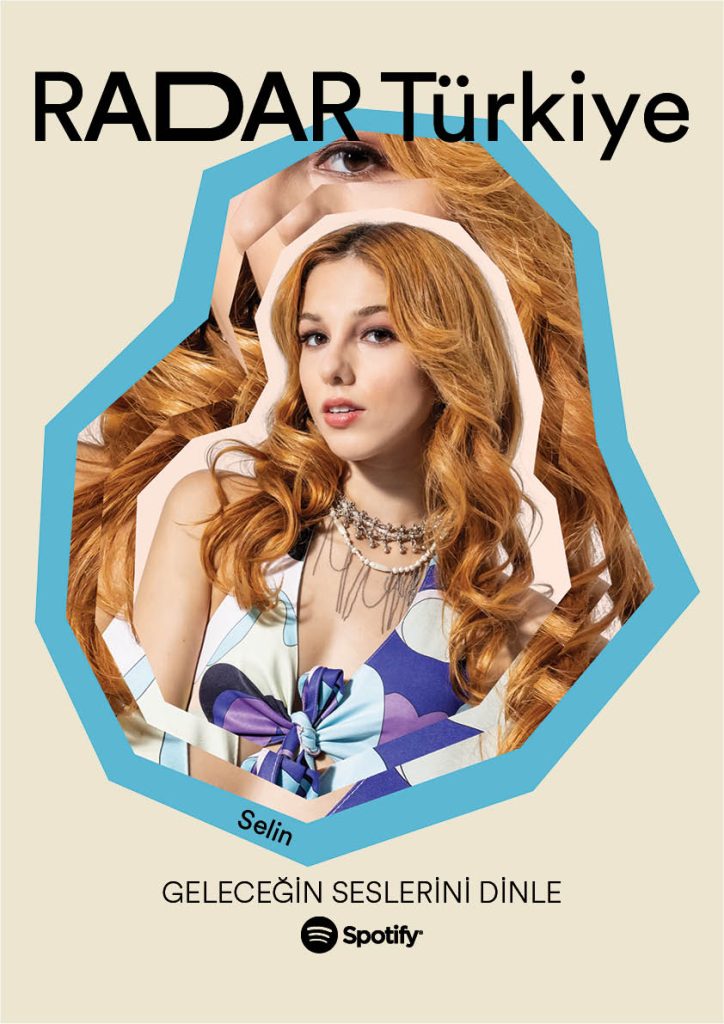
10 Years After Launching in Türkiye, We’re Taking RADAR to the Market
When Spotify launched in Türkiye in 2013, we were excited to take the world’s music to the market. But we were also eager to hear the sounds that Türkiye could deliver to listeners beyond its borders. Since then, we’ve had the privilege of witnessing the growth of a fast-paced, diverse music community with artists who create across genres like arabesk, Anatolian rock, hip-hop, indie, and folk.
Now, 10 years on, we’re celebrating another important milestone: the launch of RADAR, our emerging artist program, in Türkiye. Since 2020, RADAR has been the global home for what’s next in sound, lifting up rising artists, burgeoning songwriters, and promising podcasters as they develop and expand their global reach on the path to superstardom. Five up-and-coming Turkish artists are now part of this prestigious club.
For the Record sat down with Melanie Parejo, Head of Music for Southern and Eastern Europe, to learn more about the music trends she’s observed in Türkiye over the past decade and get a sneak peek at this first class of RADAR artists.
What are some ways the Turkish music scene has evolved over the past 10 years?
Back in the 2010s, Turkish listeners were into global music. The dominant genre from 2013 to 2017 was pop, with artists like Lana Del Rey, Arctic Monkeys, and Rihanna. But it was also a time when a new wave of indie music emerged in Türkiye with elements from 2000s—Turkish rock combined with more alternative and experimental sounds. In a short order, this new style gained popularity with artists such as Büyük Ev Ablukada, Yüzyüzeyken Konuşuruz, Dolu Kadehi Ters Tut, Adamlar, Son Feci Bisiklet, and Madrigal.
Another influence in the local music scene is the revival of Anatolian rock and Turkish psychedelic music with artists like Gaye Su Akyol, Grup Ses, Baba Zula, Elektro Hafız, Lalalar, and Derya Yıldırım & Grup Şimşek, who are creating a new wave with roots in the 1960s and 1970s Turkish Anatolian pop and rock music. Today, this genre keeps growing with new artists joining the game and bringing their own unique interpretations of it.
From 2017 and 2018, the hype around Turkish hip-hop and rap music was palpable. Take Ezhel’s iconic debut album, Müptezhel, as an example that truly reached the masses. In 2018 he held the top artist, track, and album spots on Spotify. Since then, we have continued to see hip-hop as one of the top genres, with cross-genre collaborations and hip-hop and pop getting closer to each other. While pop artists are exploring authentic sounds from hip-hop, dance, and electronic, we see some hip-hop artists also adapting the afro-trap music. Another trend worth noting out is arabesk, which is both being consumed in its original form but is also merging with pop and rap.
What are some of the notable trends and behaviors we’re seeing among Turkish listeners?
What stands out is the dedication to and appreciation of local music. Back in 2013, there were only 11 local artists in the Top 100 list in Türkiye. Over the years, we’ve witnessed a solid growth of local music consumption. Five years after the launch of Spotify in Türkiye, 66 of Türkiye’s Top 100 streamed artists were local. And in 2023 through today, that number has grown to 91.
And Turkish music is not only growing in Türkiye. The borderless nature of our platform means that Turkish talents are able to reach listeners in over 180 markets. Our data shows that Turkish artists were played outside of Türkiye close to 75% more on average year over year. Comparing 2013 to 2022, streams of local artists outside of the country have grown more than 12,000%. Speaking of exports, Turkish dance and the EDM scene have also grown a lot over the last ten years, with DJs and producers gaining recognition both domestically and abroad.
Turkish folk music also stands out as one of most long-lasting genres with its regional differences, historical journey, and cultural richness. And while the artists stay true to the traditional sounds, Spotify also sees more and more artists borrowing from the genre, creating contemporary arrangements made with folk and Anatolian music sounds. This might also explain why the genre has seen particular growth within Gen Z in the last year, with 50% of the genre’s streams coming from the younger generation.
Do you have a favorite musical moment from the past decade?
A milestone I’m personally very proud of was the launch of EQUAL in Türkiye in 2021 and how well it’s been received by the industry and our users. EQUAL is about the power of raising voices together to drive equity in music and standing together to fight for a common goal that has no borders. In 2023, we are celebrating the second year of the program in Türkiye, which has featured 29 brilliant female artists in Türkiye so far. We are absolutely thrilled by the impact our program has created for them. We are also very excited to feature Müzeyyen Senar—the Republic’s Diva—as our latest EQUAL Ambassador for October in celebration of the 100th year of the Turkish Republic. The launch of EQUAL has boosted the awareness and streaming of female artists both locally in Türkiye and globally. Streams of Turkish female artists in Türkiye saw a spike between 2021 and 2022, with almost 60% more female artists streamed by Turkish listeners. Outside of Türkiye, Turkish female artists were streamed almost 30% more in 2022 compared to 2021.
Why are you excited to launch RADAR in the market?
By launching RADAR in Türkiye we’re putting in an even stronger effort to support emerging Turkish talents and boost their exposure at a crucial point in their careers, both inside and outside of Türkiye. With Böyleyken Böyle, Ege Can Sal, Paptırcem, Selin, and Sena Şahin we have a strong first cohort that truly represents the diversity of the Turkish music scene. And while each one of them comes from different backgrounds and has different styles, they all have their unique ways to express themselves. With RADAR Türkiye, we want to make sure to showcase the many brilliant and talented minds in our country and let everyone witness what happens when an opportunity is given to them.
Introducing Türkiye’s first class of RADAR artists
Each of our five inaugural artists has their own vision, point of view, and sound. Some are more attuned to global modern pop and indie, while others take a more traditional approach. Something they all have in common? The potential to shape the future of music in Türkiye.
Paptircem

Singer-songwriter, producer, keyboard player
Based in: İstanbul
Fun fact: She’s gone viral for a series of shorts where she played piano harmonizations over funny videos and has also become known for her unique approach in producing and songwriting.
Böyleyken Böyle
 Indie pop/alternative duo
Indie pop/alternative duo
Based in: İstanbul
Fun fact: They started their journey in 2020 and have released more than 10 singles and an EP. Elements of synth pop, indie rock, and singer-songwriter can be heard in their music.
Selin

Pop singer-songwriter
Based in: İstanbul
Fun fact: Her Sezen Aksu cover, “Yalancı Bahar,” went viral, resulting in 12M streams. Her collaboration with Turkish DJ-producer Mahmut Orhan, “In Control,” received 10M streams. Selin performs with his father, Selim Geçit, an established and talented guitarist.
Sena Şahin

Singer, songwriter and musician
Based in: İstanbul
Fun fact: She started her career by composing jazz, soul, and R&B on piano. She found a wider audience when her track “Sonu Var Mı” was used in a local Netflix show, Kuş Uçuşu.
Ege Can Sal

Singer-songwriter, Turkish R&B/pop
Based in: İstanbul
Fun fact: Built a fan base with the cover videos he shared online, and broke the internet with his first release, Başa Sar.
Excited? Stream RADAR Türkiye to hear from these artists.










